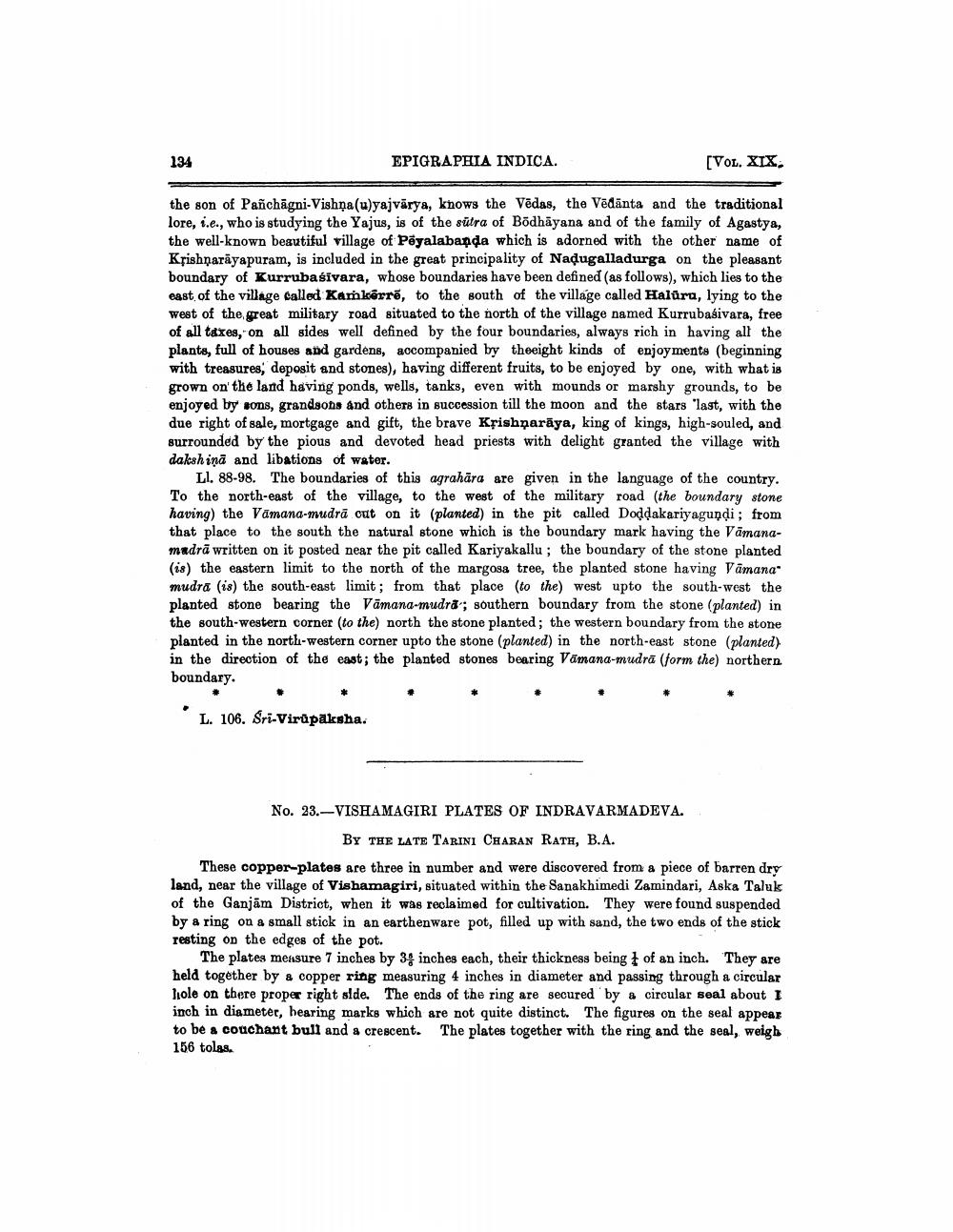________________
134
EPIGRAPHIA INDICA.
[VOL. XIX.
the son of Pañchagni-Vishna (u)yajvarya, knows the Vedas, the Vedanta and the traditional lore, i.e., who is studying the Yajus, is of the sutra of Bōdhayana and of the family of Agastya, the well-known beautiful village of Peyalabanda which is adorned with the other name of Krishnarayapuram, is included in the great principality of Naḍugalladurga on the pleasant boundary of Kurrubasivara, whose boundaries have been defined (as follows), which lies to the east of the village called Kamkerre, to the south of the village called Haluru, lying to the west of the great military road situated to the north of the village named Kurrubasivara, free of all taxes, on all sides well defined by the four boundaries, always rich in having all the plants, full of houses and gardens, accompanied by theeight kinds of enjoyments (beginning with treasures, deposit and stones), having different fruits, to be enjoyed by one, with what is grown on the land having ponds, wells, tanks, even with mounds or marshy grounds, to be enjoyed by sons, grandsons and others in succession till the moon and the stars last, with the due right of sale, mortgage and gift, the brave Krishṇaraya, king of kings, high-souled, and surrounded by the pious and devoted head priests with delight granted the village with dakshina and libations of water.
Ll. 88-98. The boundaries of this agrahara are given in the language of the country. To the north-east of the village, to the west of the military road (the boundary stone having) the Vamana-mudra cut on it (planted) in the pit called Doddakariyagundi; from that place to the south the natural stone which is the boundary mark having the Vamanamadra written on it posted near the pit called Kariyakallu; the boundary of the stone planted (is) the eastern limit to the north of the margosa tree, the planted stone having Vamana mudra (is) the south-east limit; from that place (to the) west upto the south-west the planted stone bearing the Vamana-mudra; southern boundary from the stone (planted) in the south-western corner (to the) north the stone planted; the western boundary from the stone planted in the north-western corner upto the stone (planted) in the north-east stone (planted) in the direction of the east; the planted stones bearing Vamana-mudra (form the) northern boundary.
L. 106. Sri-Virupaksha.
No. 23. VISHAMAGIRI PLATES OF INDRAVARMADEVA.
BY THE LATE TARINI CHARAN RATH, B.A.
These copper-plates are three in number and were discovered from a piece of barren dry land, near the village of Vishamagiri, situated within the Sanakhimedi Zamindari, Aska Taluk of the Ganjam District, when it was reclaimed for cultivation. They were found suspended by a ring on a small stick in an earthenware pot, filled up with sand, the two ends of the stick resting on the edges of the pot.
The plates measure 7 inches by 38 inches each, their thickness being of an inch. They are held together by a copper ring measuring 4 inches in diameter and passing through a circular hole on there proper right side. The ends of the ring are secured by a circular seal about I inch in diameter, bearing marks which are not quite distinct. The figures on the seal appear to be a couchant bull and a crescent. The plates together with the ring and the seal, weigh 156 tolas.




